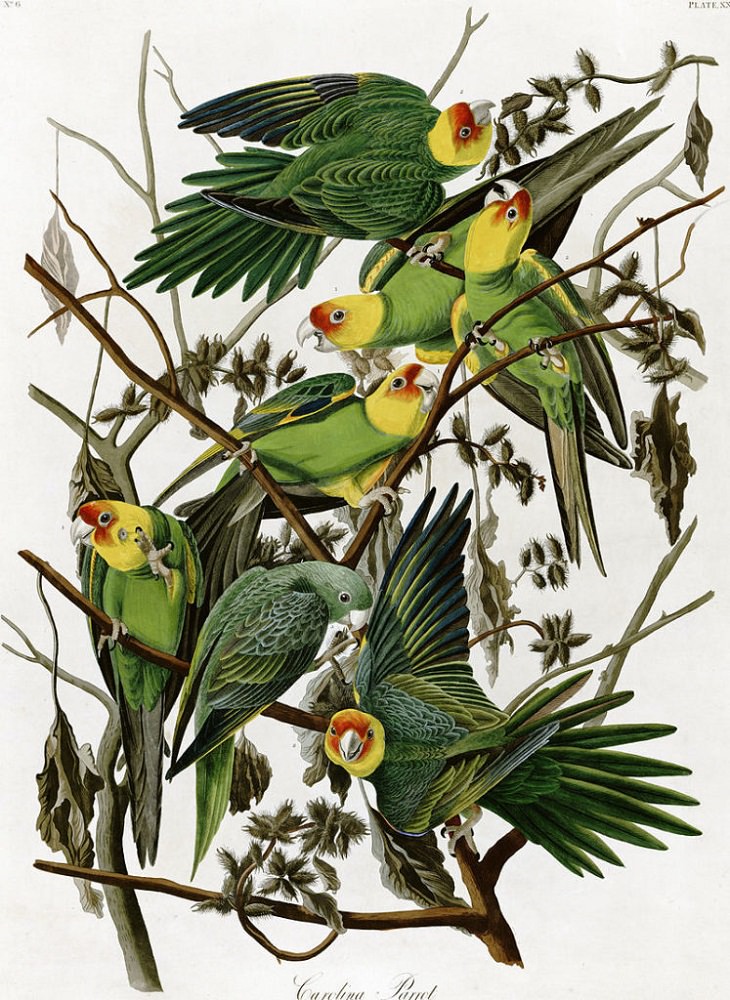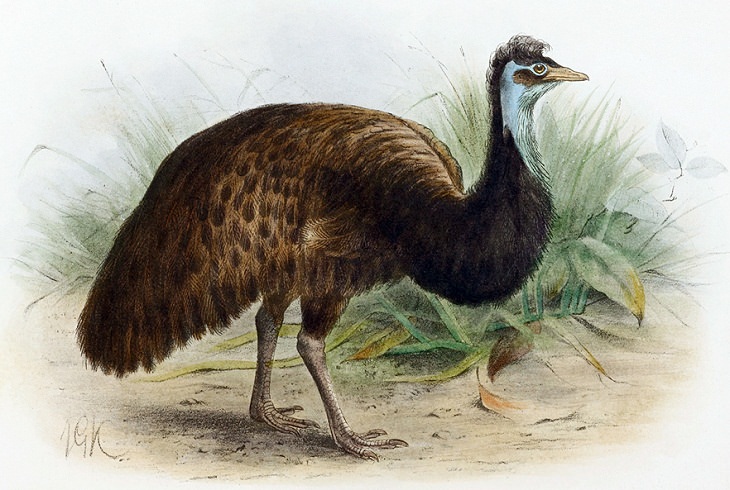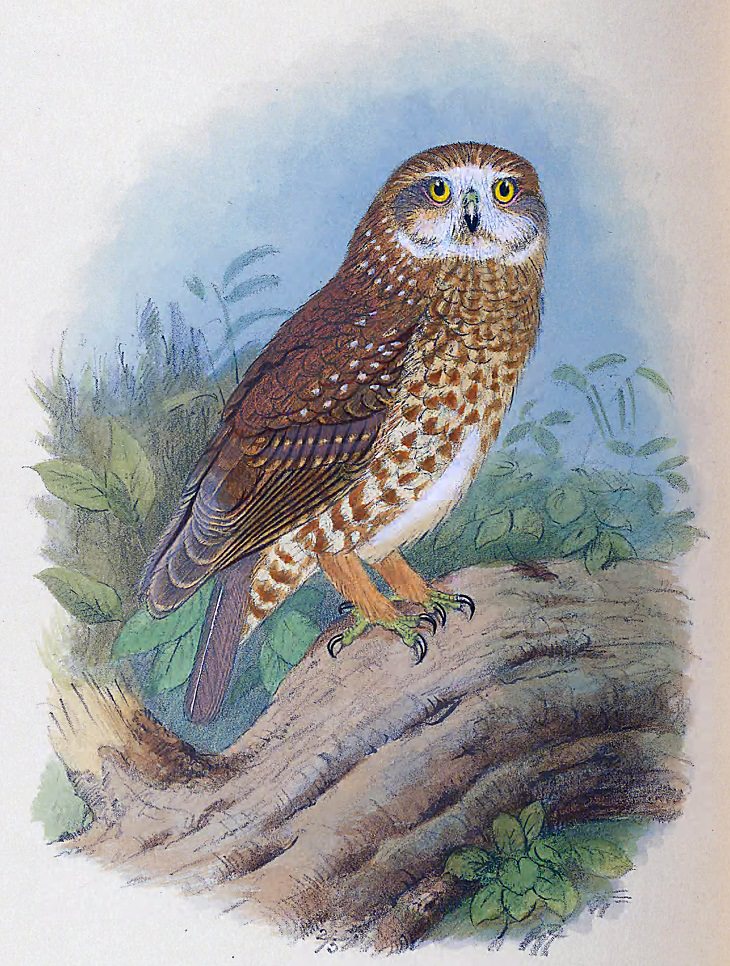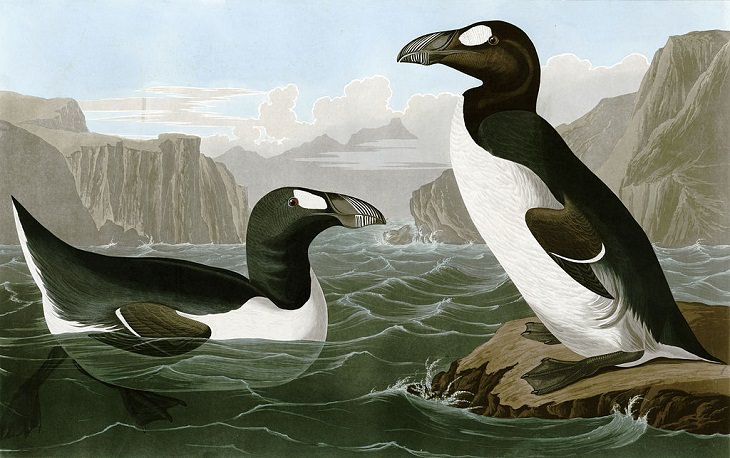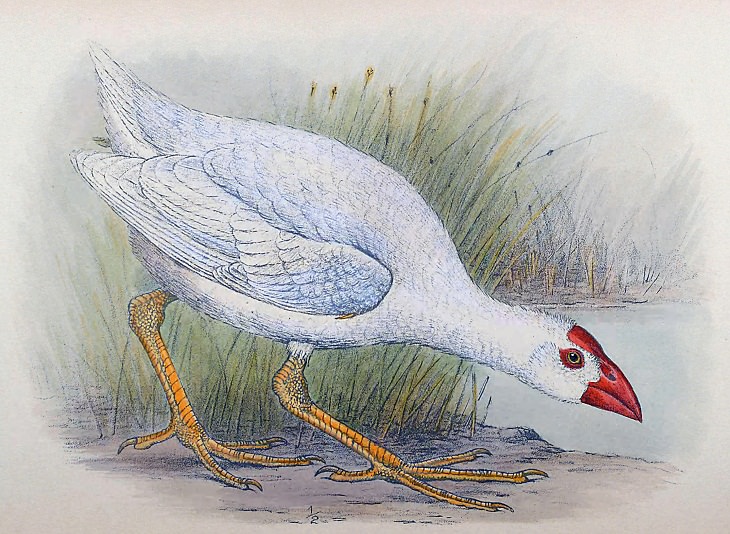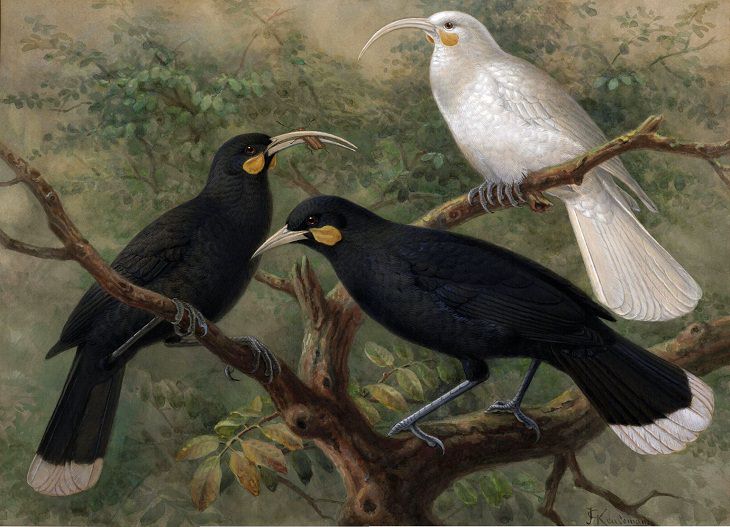1. Labrador Duck
The Labrador Duck (Camptorhynchus labradorius) was a migratory bird that is believed to have been native to Coastal Labrador in Canada. Before it went extinct, this rare bird was considered a sea duck and was also known as the Pied duck and the Sand Shoal Duck. Its vivid black and white feathered body even earned it the name Skunk Duck.
The Labrador Duck fed in shallow waters and preferred sandy coasts, bays, and inlets. In 1829, the eminent naturalist Alexander Wilson described this bird in these words: "This is a rather scarce species on our coasts, and is never met with on freshwater lakes or rivers. It is called by some gunners the Sand Shoal Duck, from its habit of frequenting sand bars. Its principal food appears to be shellfish, which it procures by diving. The flesh is dry and partakes considerably of the nature of its food. Of their particular manners, place, or mode of breeding, nothing more is known."
The last reported sighting of the Labrador duck was in 1878 when it was shot by a hunter and the reasons for their extinction remain a mystery.
2. Carolina Parakeet
The Carolina Parakeet (Conuropsis carolinensis) was the only parrot species native to the eastern United States. This colorful bird was found in the coastal plains of Alabama and lived in old forests along rivers. These parakeets were known to be very noisy and often moved in flocks. The birds also became famous back in the day because of their beautiful feathers which were used for many decorative purposes.
Like several other animals before and after it, the Carolina Parakeet suffered because of deforestation that destroyed their natural habitats. As the forests were being cleared out, many farmers shot these precious birds fearing they might attack their crops.
The last known Carolina Parakeet was killed in Okeechobee County, Florida, in 1904, and the last captive bird died at the Cincinnati Zoo in 1918.
3. Choiseul Crested Pigeon
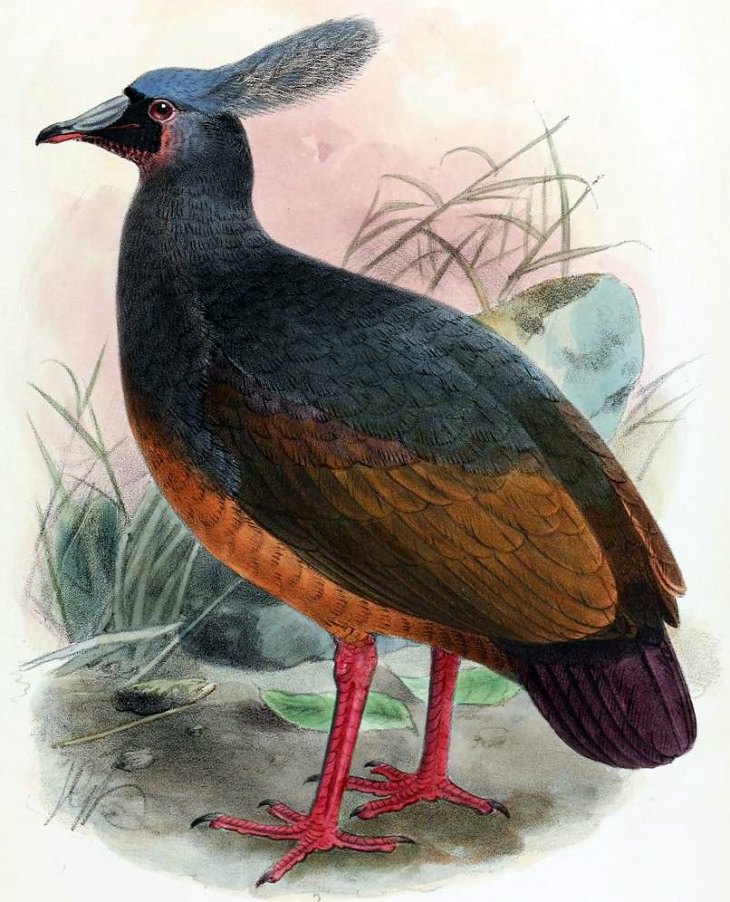
The Choiseul Crested Pigeon (Microgoura meeki) was found on the Solomon island of Choiseul in the Pacific. It had a beautiful rising and falling whistling call and stood out because of a dark bluish crest on its head.
Before the introduction of feral cats by visitors to the islands, the Choiseul had no carnivorous mammals to fear other than men on the island who hunted it sometimes. It is believed that these birds were wiped out by the feral cats who fed on them regularly. It’s beautiful bluish crest also made it easy to spot. This pigeon was apparently quite tame and wouldn’t even fly away when local hunters approached it.
4. Kangaroo Island Emu
The Kangaroo Island Emu (Dromaius novaehollandiae baudinianus) was first described in 1802 by British Naval Officer Matthew Flinders who said that the flightless bird was quite common around Nepean Bay in Australia. Also known as dwarf emu because of their much smaller size compared to emus on the Australian mainland, these birds were found exclusively on Kangaroo Island in South Australia.
There is not much information known about how or when these birds went extinct but it is believed that the very early settlers on the island hunted down the small emus to supplement food supplies. The Kangaroo Island Emu might have gone extinct as early as 1827 and Australia’s famous emu is now the only living representative of its genus.
Today, only one stuffed specimen of the Kangaroo Island Emu remains and can be found in the Natural History Museum of Geneva.
5. Lord Howe Boobook
The Lord Howe Boobook (Ninox novaeseelandiae albaria), also known as the Lord Howe Morepork, was a bird in the true owl family and was endemic to Lord Howe Island in the Tasman Sea, part of New South Wales, Australia. This small brown hawk owl had a spotted plumage and looked paler than other members of its sub-species.
The bird was found only in the Lord Howe Island where it lived in the native forests. It is said that the owl fed almost exclusively on birds as there were here no other mammals present on the island apart from a species of bat.
The extinction of the Lord Howe Boobook was caused by competition with and predation by introduced owls. The species is believed to have gone extinct somewhere around the 1950s.
6. Great Auk
The Great Auk (Pinguinus impennis) was the original penguin. Once upon a time, millions of these large black-and-white seabirds were widely found all across the North Atlantic Ocean; primarily in the cold regions of Iceland, Greenland, Norway, and Great Britain.
The Great Auk was about 80cm (2ft 7in) tall and weighed around 5 kg (11 pounds). Since they were flightless, the birds were always targeted by local people for food and for their feathers. In fact, Great Auks were even hunted by prehistoric humans for their flesh and eggs. By 1500, European seafarers, too, had discovered these birds and hunted them for their down (a layer of fine feathers found under the tougher exterior feathers), which was used to make pillows.
The last of the Great Auk was seen in July 1844, on the islet of Stac an Armin, St Kilda, Scotland, where it was caught and killed.
See Also: 12 Animals Scientists Want to Bring Back from Extinction
7. Canary Islands Oystercatcher
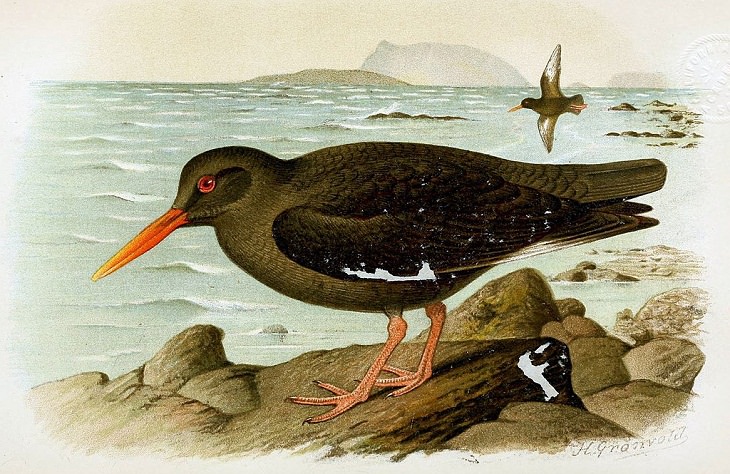
The Canary Islands Oystercatcher (Haematopus meadewaldoi) was a crow-sized wading bird that spent most of its time on beaches hunting for marine invertebrates and was native to the Spanish islands. This bird had a glossy black plumage along with some white patches on the wings and closely resembled the African Oystercatcher (H. moquini).
Interestingly, the distinctness of the Canary Islands Oystercatcher has been the subject of much controversy and mystery ever since it was first described in 1913. Initially, it was thought to be a subspecies of the African Oystercatcher (Haematopus moquini), then a subspecies of the Eurasian Oystercatcher (Haematopus ostralegus). Later, it was declared as a distinct species – Haematopus meadewaldoi. However, recent DNA tests have revealed that the bird was actually almost identical to types commonly found in the UK and throughout Europe.
The last known specimen of Canary Islands Oystercatcher was shot in its native habitat in 1913 by British ornithologist David Bannerman. Today, only eight specimens of the bird exist in museum collections.
8. White Swamphen
The Lord Howe Swamphen or White Swamphen (Porphyrio albus), was endemic to the remote Lord Howe Island in Australia. Also known as White Gallinule, it was similar to the Purple Swamphen but had shorter and stronger legs and toes. The stately species had a solid red beak and yellowish-red legs. The bird was most probably flightless and was first sighted in 1788.
Not much is known of the White Gallinule’s habits but many experts believe that it may have been a predator on the chicks of the other bird species that swarmed the island. By 1844, the White Gallinule had been wiped out from Earth. Just two skins of this bird species survive today - one in Liverpool and one in Vienna - both of which date to the late eighteenth or early nineteenth centuries.
9. Huia
The Huia (Heteralocha acutirostris) was an iconic bird found in New Zealand. This large songbird had elegant black-and-white feathers along with a green and bluish-purple metallic sheen. Interestingly, the males had a strong chiseling bill, whereas the female had a long, decurved, malleable bill. The Huia was known for its loud distress call and moved through the forest by hopping or bounding along branches and on the ground. The beautiful bird was prized by the Maoris in New Zealand who used their white-tipped tail feathers in ceremonial headdresses. It has also been reported that they were the first bird to call in the early dawn.
Predation by introduced mammals and human hunting led to the extinction of the Huia about the end of the 19th century and the last accepted sighting of the bird was in 1907. However, it is possible that a few of them survived until the 1920s.
See Also: Wow! These 15 Extinct Animals Might Have Actually Survived
10. New Zealand Quail
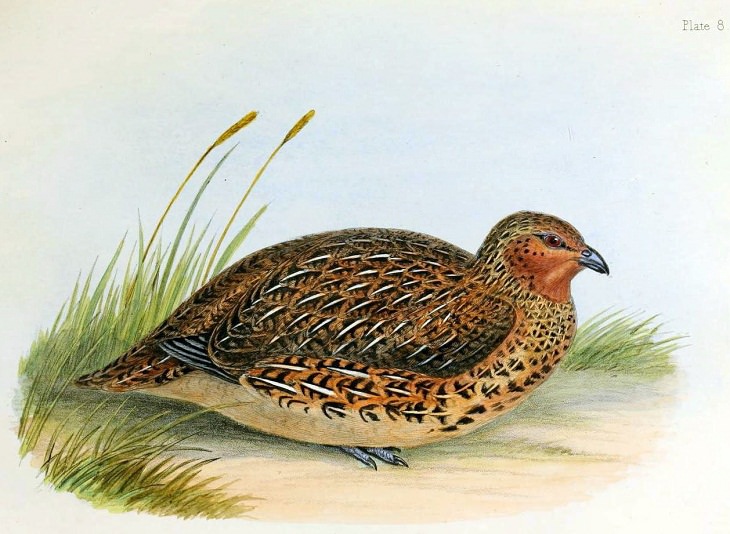
The New Zealand Quail (Coturnix novaezelandiae), or koreke, was a small ground bird and the only native representative of the pheasant and quail family. It used to be common throughout the North and South Islands, and the Maori exploited it as a food source. The bird was first described by scientist Sir Joseph Banks in the late 1760s when he visited New Zealand on James Cook's first voyage. These birds thrived in temperate grasslands and open fern lands and were brought into the area as a game bird.
The New Zealand Quail has been extinct since 1875. The extinction of this quail was mainly caused by fires that destroyed food and cover as well as the birds. Introduced mammals such as dogs, cats, and rats also contributed to its extinction.
Share this post with other nature lovers!


